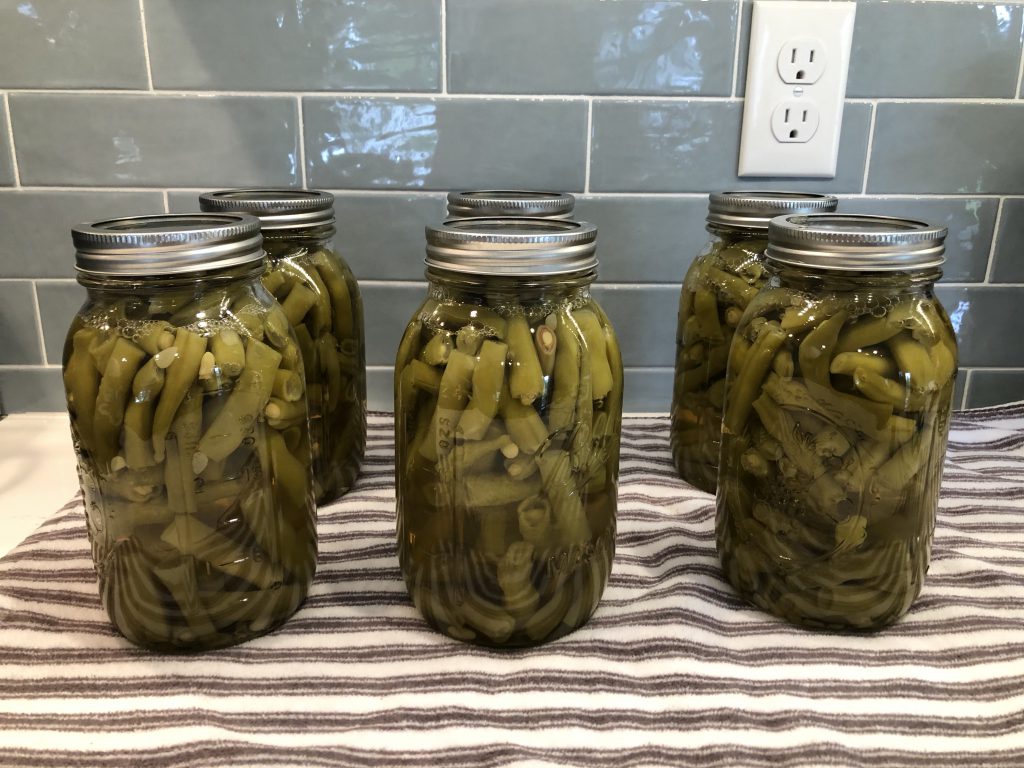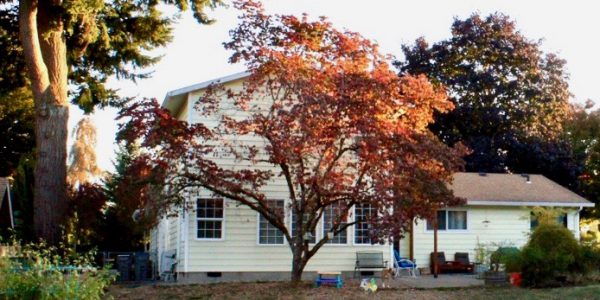
I’ve had a Presto 23 Quart Pressure Canner sitting in my pantry closet for 4-5 years. Our daughter, Jillian, bought it for me as a birthday gift several years ago when Tygh and I first started to water-bath pepper jelly and tomatillo enchilada sauce.
I wanted the pressure canner but was too intimidated to use it. We’ve all heard horror stories of pressure canners exploding and covering your kitchen in an explosion of tomato sauce or salsa or worse, injuring yourself or a loved one.
So there it sat. Dusty. Unopened in its original box.
Well, not anymore!
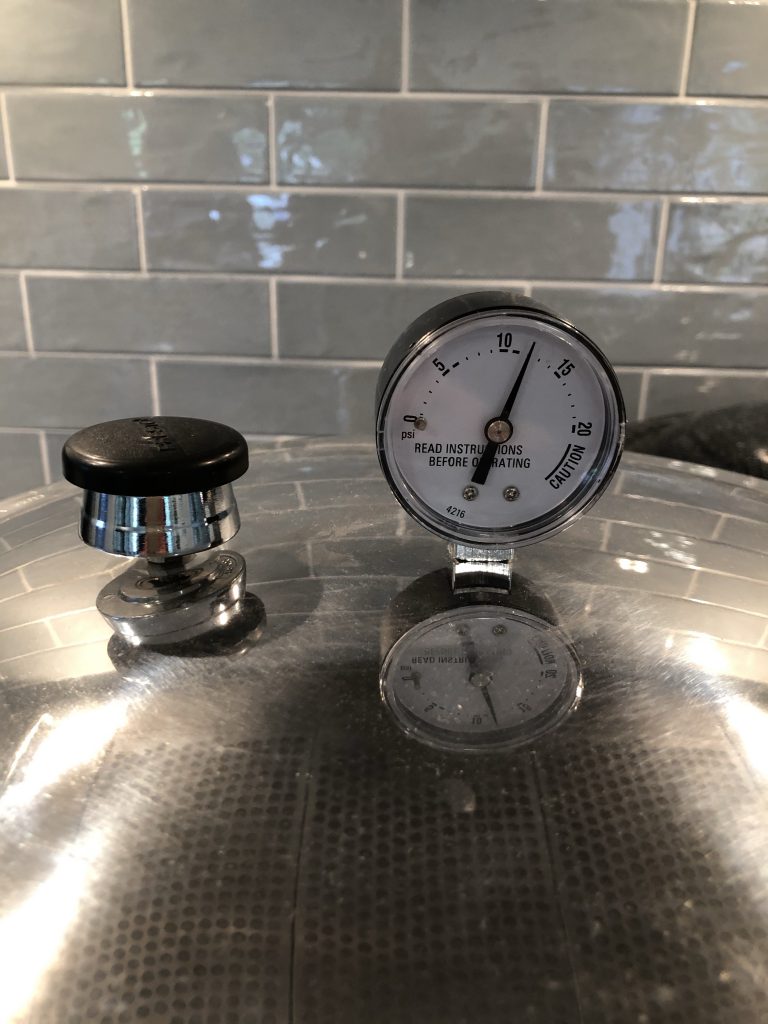
I’ve immersed myself in learning about canning this summer. I’ve read blogs, watched You Tube videos but what made the most impact was joining two canning groups on Facebook. Reading other people’s positive experiences with modern pressure canners and seeing the wonderful things they were processing for their families finally gave me the nudge I needed to unbox mine, read the manual and take the plunge.
We’ve had such a great harvest of green beans this season. We’ve done probably 25 jars of dilly beans in a water-bath and I’ve probably blanched and frozen another 10 pounds of beans for use this winter. And yet, the plants keep producing.
So, green beans became our first pressure-canning project.
It was much less scary than I anticipated and actually a lot of fun to see the canner do its work and to pull out 7 quarts of processed beans.
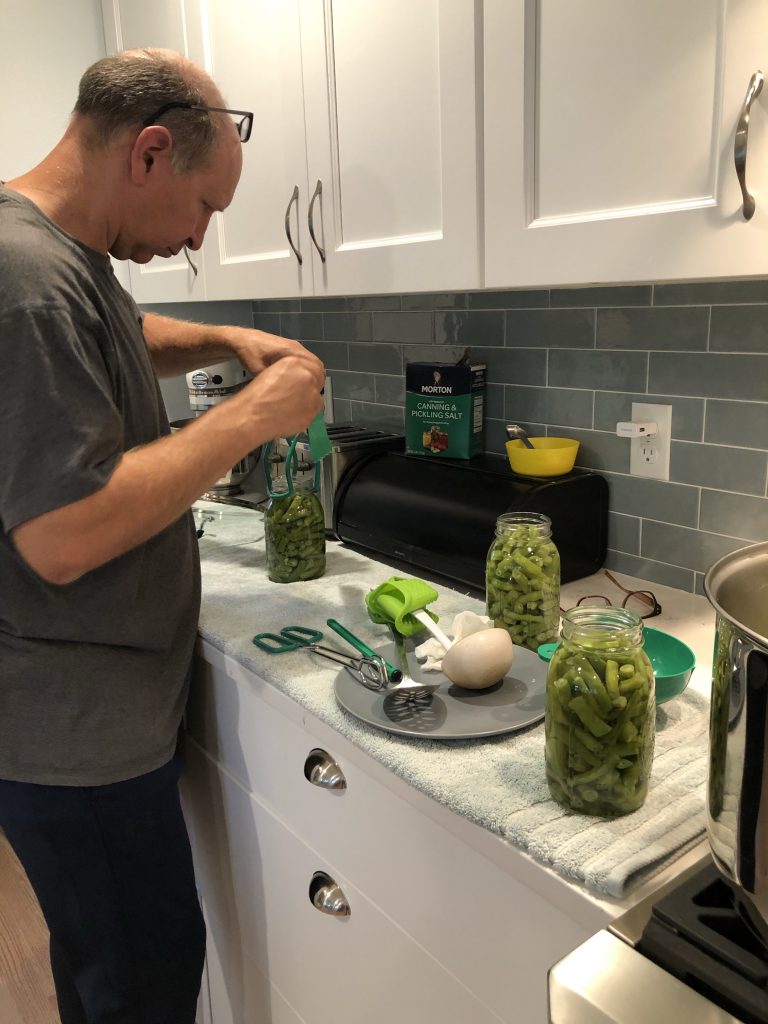
Tygh helped me pack the jars with hot beans and liquid.
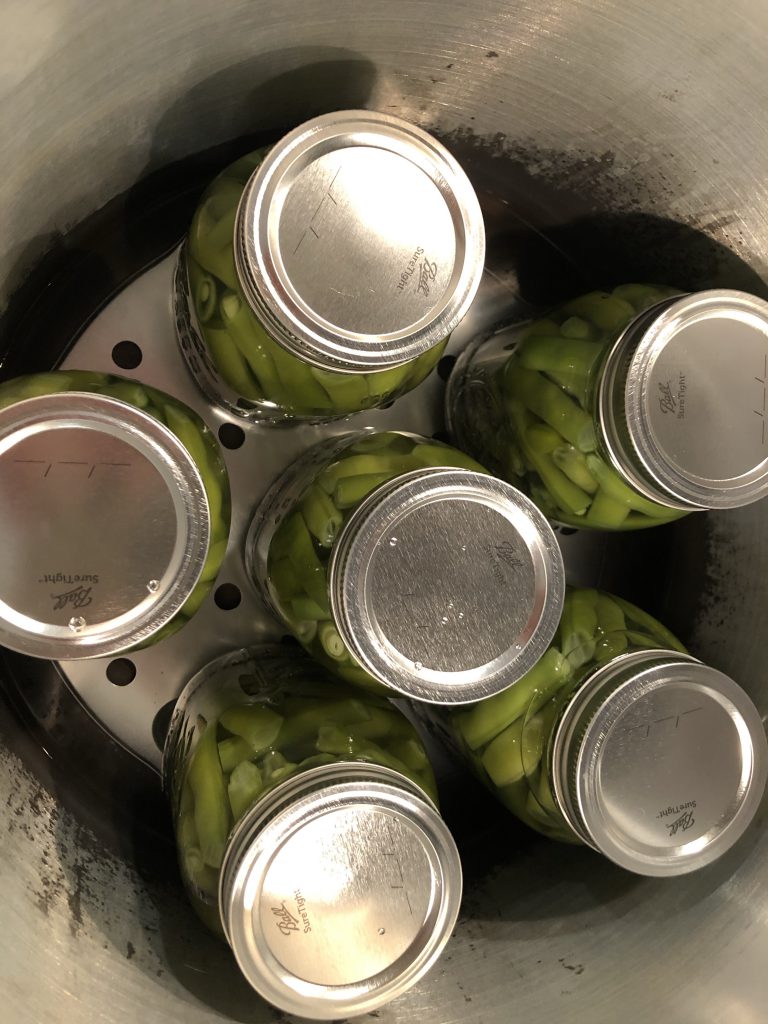
You begin by boiling the beans for 5 minutes on the stove. Once they’ve boiled, pack them into jars leaving a one-inch headspace. Remove air bubbles from the jars. Place them in the canner. Lock it down. Process for 25 minutes. Let the canner cool down. Remove and admire your handiwork. Well, there’s lot of extra little steps I’ve skipped but you get the idea.
We did have a little siphoning of liquid from the jars after processing. I feel confident we processed without wild swings of heat and I know I let the jars cool for the recommended time before pulling them from the canner. Both things can contribute to siphoning.
I think perhaps we should have packed the beans a little tighter and worked on those air bubbles a little more which can also have an impact on liquid levels in jars.
We will do that with our next project. For now, we feel accomplished and proud. We conquered a fear. We have a usable product for this fall and winter. All is good.
